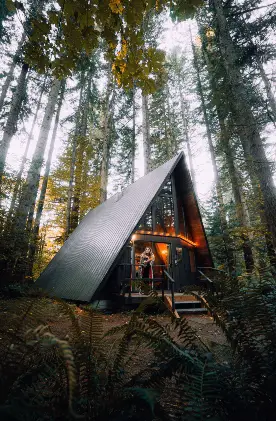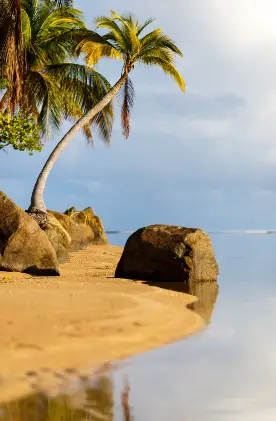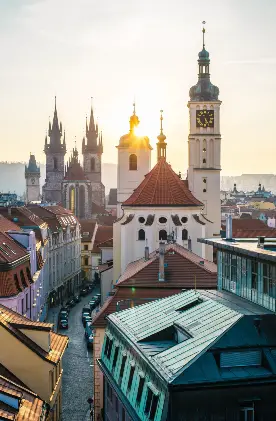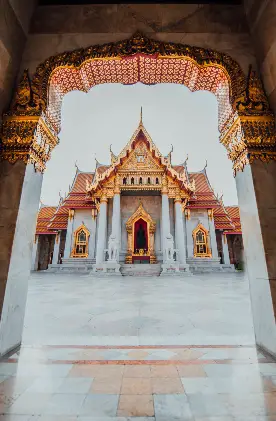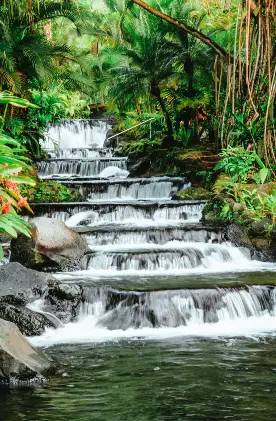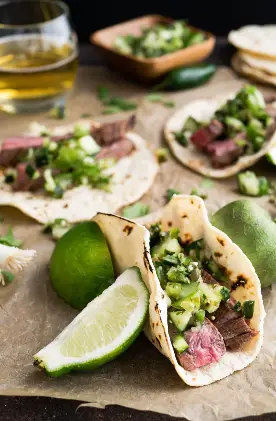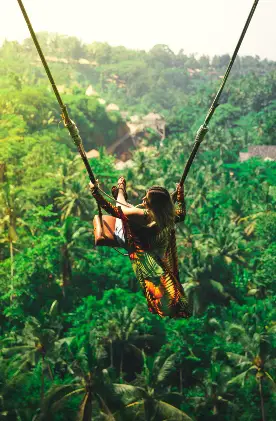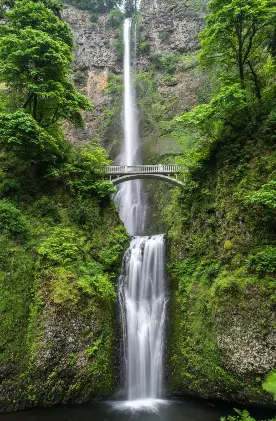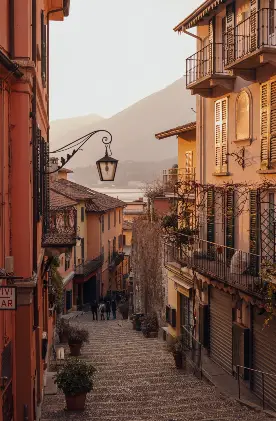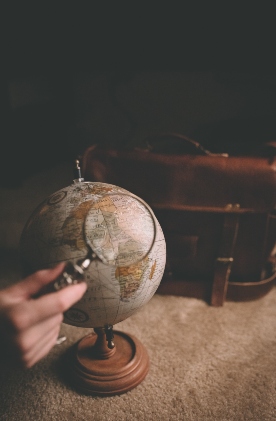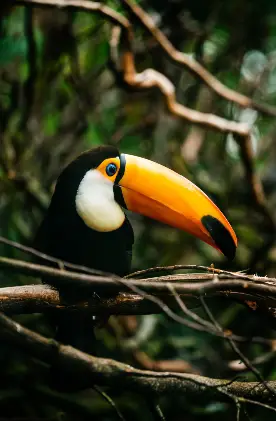I’m Linda – born and raised in Germany and currently living in South Korea. I have a German mother and an American father. I’ve been lucky enough to travel the world from a young age to neighbouring European countries as well as overseas to the United States of America where my Dad is from.
Growing up in Europe, I also got the chance to study foreign languages like French and Spanish. This helped spark my love of travel. After learning these two Romantic languages, I was eager to pick up something new and different. So, I decided to learn Mandarin Chinese.
This led me to take an internship in China. I started to blog and write about my experiences in Asia through my website ‘Linda Goes East’.
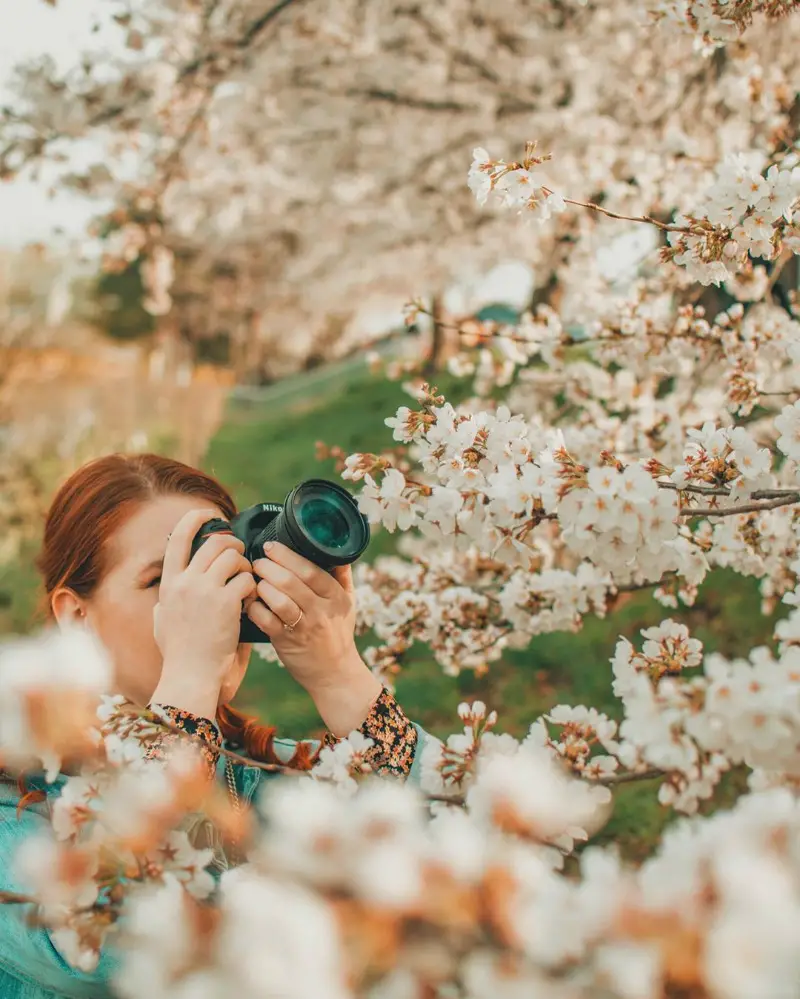
South Korea, the Most Exciting Destination in Asia
I was introduced to “all things Korean” through my husband Jeongsu. Before we met, I didn’t know anything about South Korea. All I knew was the ongoing tension with North Korea that’s constantly on the news.
I’ve been in South Korea for five years now and have really gotten a broad perspective of South Korea as a travel destination. Even though Korea has become more and more popular in recent years (mostly due to K-pop and K-dramas), it’s still not a “go-to” travel destination for many people.
When I first visited Korea, I couldn’t believe how a country that has so much to offer wasn’t talked about and represented more in the international travel industry. South Korea is often left in the shadows between its neighbors China and Japan, which are both such popular destinations for travel.
However, South Korea really shines as a unique and off-the-beaten path place to explore. It’s quite different from other countries in Asia. South Korea has a vibrant culture and is shaped by a mix of old and new.
This is especially evident in places like Seoul, where the tallest building with 123 floors overlooks traditional hanok houses from a hundred years ago.
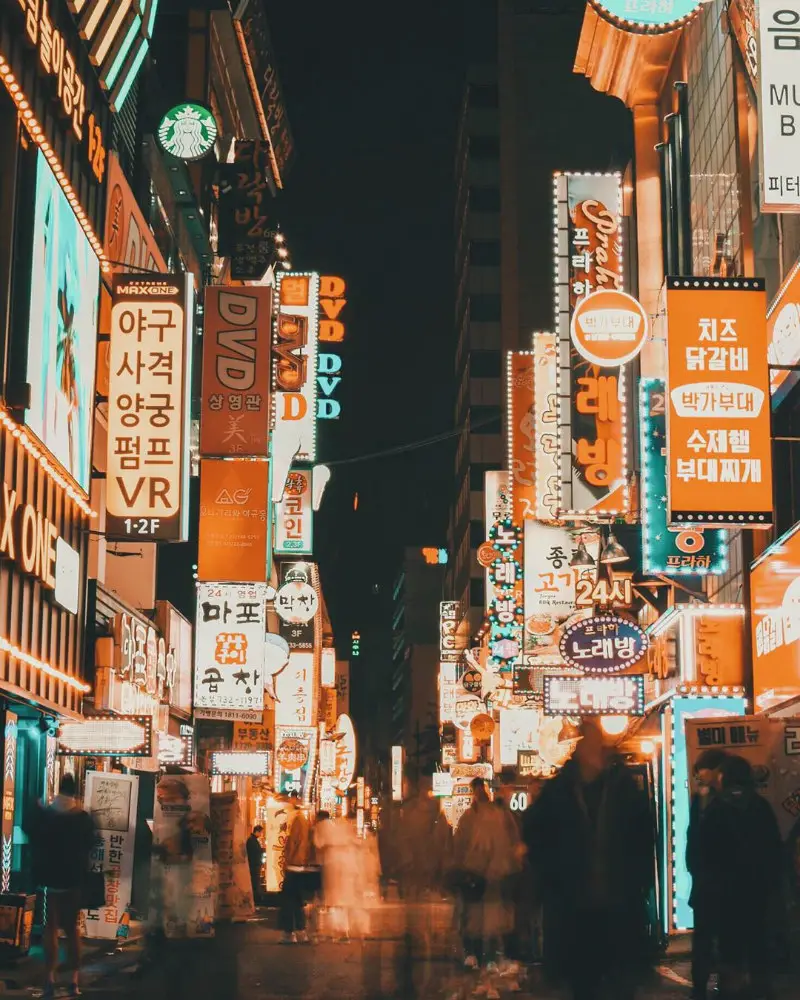
Five Years Living and Travelling in South Korea
I permanently settled in South Korea in 2015 and have since had the opportunity to explore Korea quite a bit. Thanks to sponsored partnerships with UNESCO Korea and travel providers like Trazy, I regularly get to travel around and explore popular and off-the-beaten-path destinations.
I’ve enjoyed visiting cultural and historic places such as the many temples and palaces across the country. Another experience I fondly remember is taking a traditional tea ceremony class in the Bukchon Hanok Village in Seoul. I learned how to prepare the perfect cup of Korean green tea.
My love for tea also inspired a trip to a lesser-known area called Hadong. This is one of South Korea’s most prominent areas for tea production. The area is filled with tea fields and little family-owned teahouses.
On the other hand, I also love visiting Seoul as it’s ever-changing and new venues, cafes, shows and exhibitions take place on a regular basis. There’s always something fun going on in the capital city of South Korea.
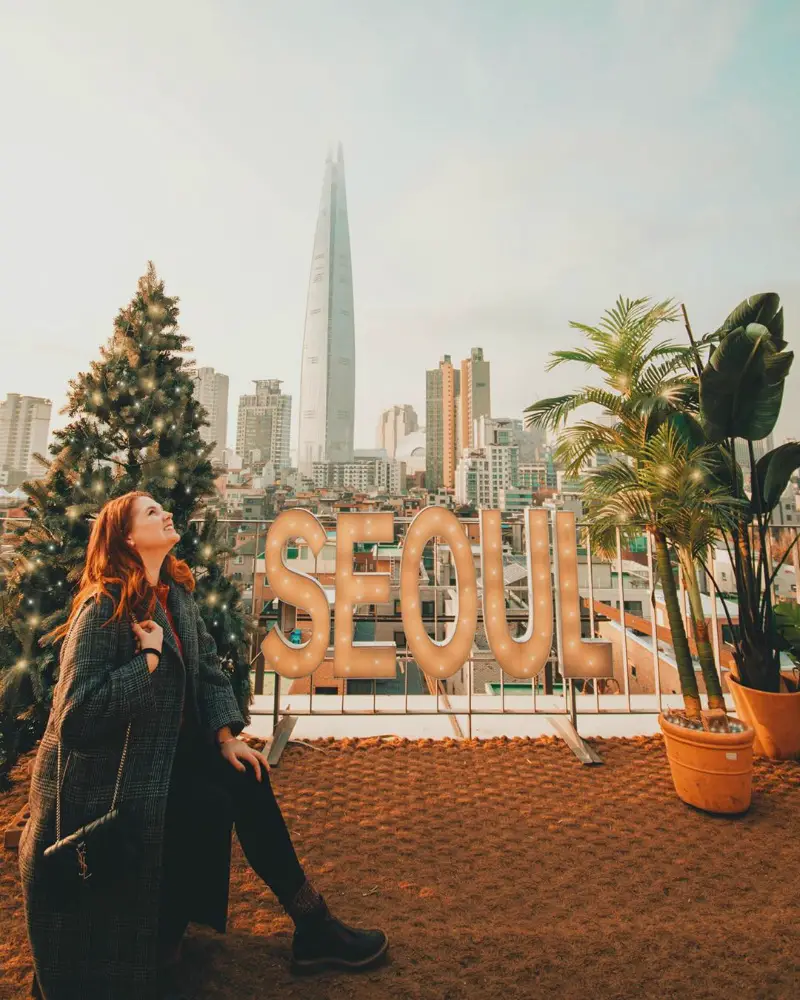

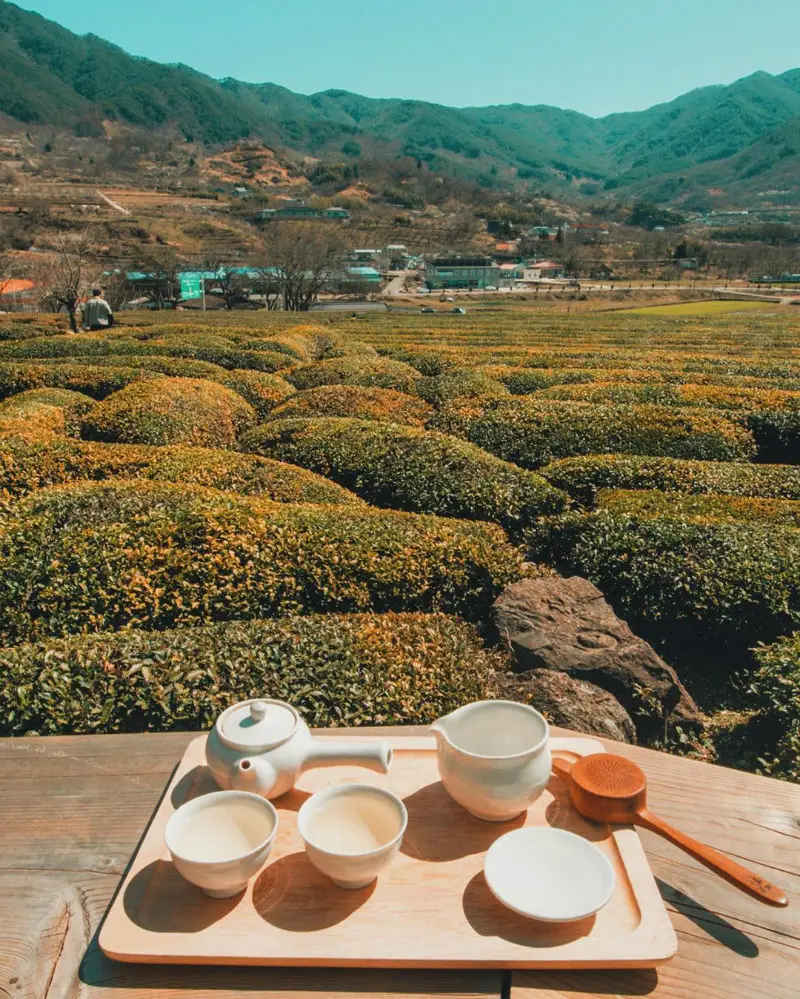
My Favourite Place – Haedong Yonggungsa
I love exploring temples. There’s a temple in pretty much every little town but the most impressive temples are usually up in the mountains.
There is a stunning temple called Haedong Yonggungsa in Busan (the second largest city in Korea) that sits on a rocky coast by the ocean. It was built in 1376 and is simply a breathtaking place to visit.
When visiting smaller temples you’re often the only “visitor” there and can truly enjoy the peacefulness of the place and take it all in. South Korea also runs a successful cultural program inviting locals and visitors to stay at a Korean temple and live with the nuns or monks for a weekend or longer.
It’s called Templestay Program and is widely available across the country.
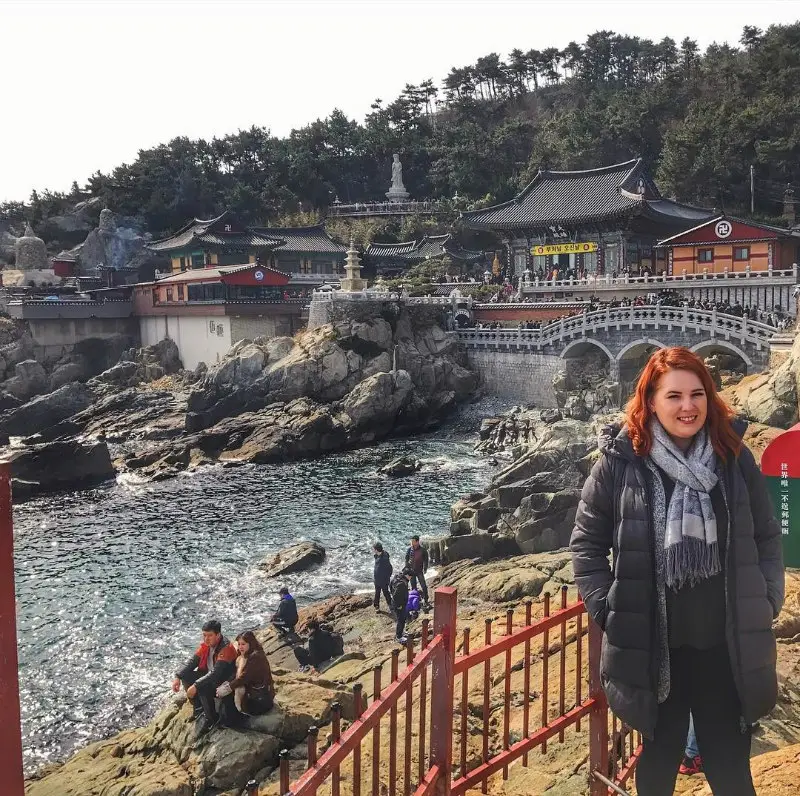
10 Best Things To Do in South Korea
South Korea is a magical place that offers something for everyone. I definitely have a top 10 things to do in Korea and I mention most of these in the article on my blog: “Don’t Leave Korea Without Ticking These Items Off Your List”. Check out my article and list of experiences below:
1. Visit Gyeongbokgung Palace & Wear Hanbok Dress
Gyeongbokgung Palace in Seoul should be at the top of every itinerary to South Korea. The palace was built in 1395 and was home to the Joseon dynasty. Many believe that the inspiration for its design came from the Forbidden City in Beijing. Here you can rent a traditional hanbok dress.
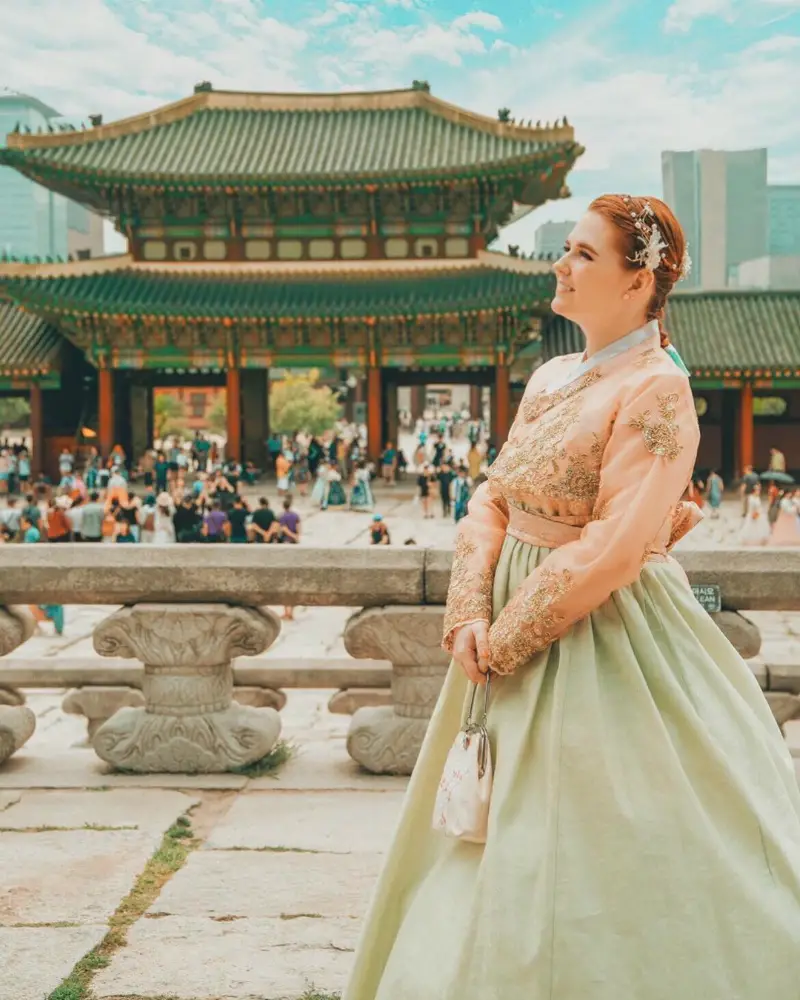
2. Gorge on the Delicious Korean Street Food
Korean food is becoming popular in the West and it’s easy to see why. The street food here is phenomenal. There are a multitude of dishes and snacks that are sold at markets which are super cheap and absolutely delicious. Try the spicy rice cakes and sweet Korean pancakes!
3. Explore the Green Tea Fields in the South
Green tea is everywhere in Korea and it’s a beautiful beverage to enjoy. The Boseong Green Tea Fields are a fantastic place to visit even if you don’t love this drink. I recommend hiking to the top of the mountain for some special views. Also, try the green tea ice cream on your way down!
4. Visit a Charming Local Teahouse
As you may have already guessed, I am a big fan of everything related to tea. So visiting a local teahouse in Korea for the first time was a special occasion for me. My favourite teahouse is Tteuran in Ikseon-dong. However, there are plenty of cute little places to choose from all over Korea.
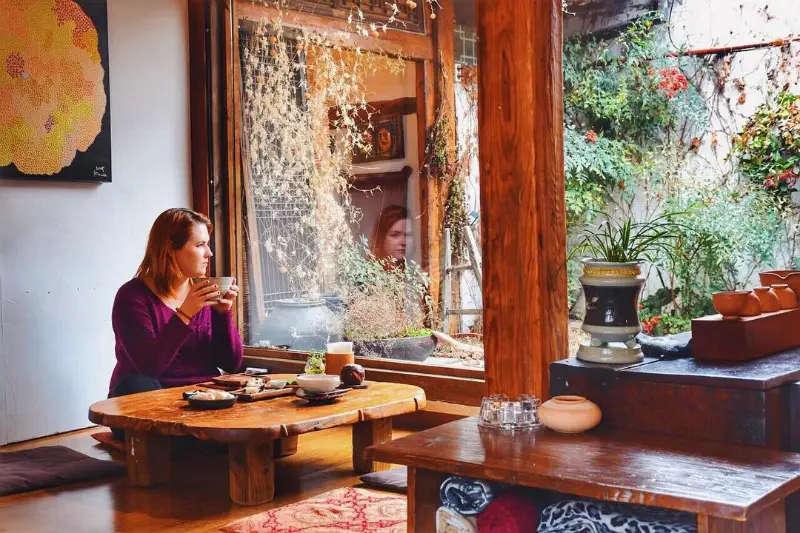
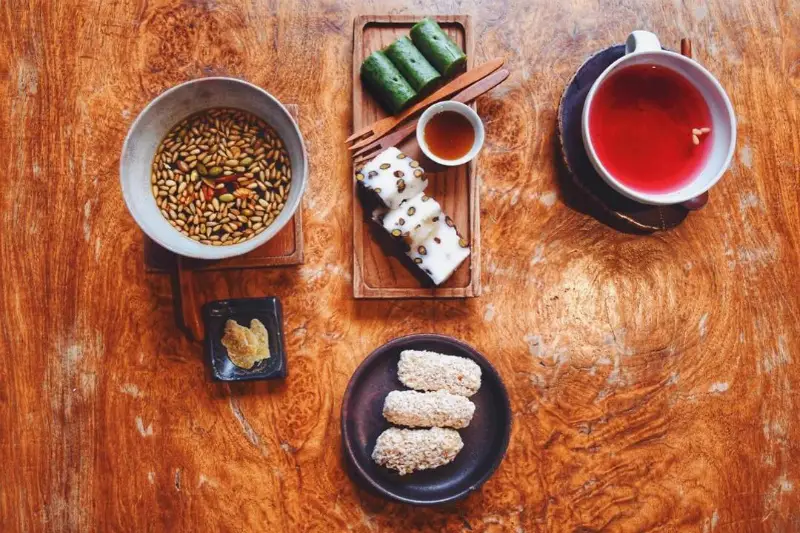
5. Head up Lotte World Tower, the Tallest Building
Lotte World Tower is the tallest building in South Korea and the fifth tallest in the world. It stands at a height of 555.7m and offers staggering views across the metropolis of Seoul. I recommend heading up to the top floor for the best views of the capital. I hope you like heights!
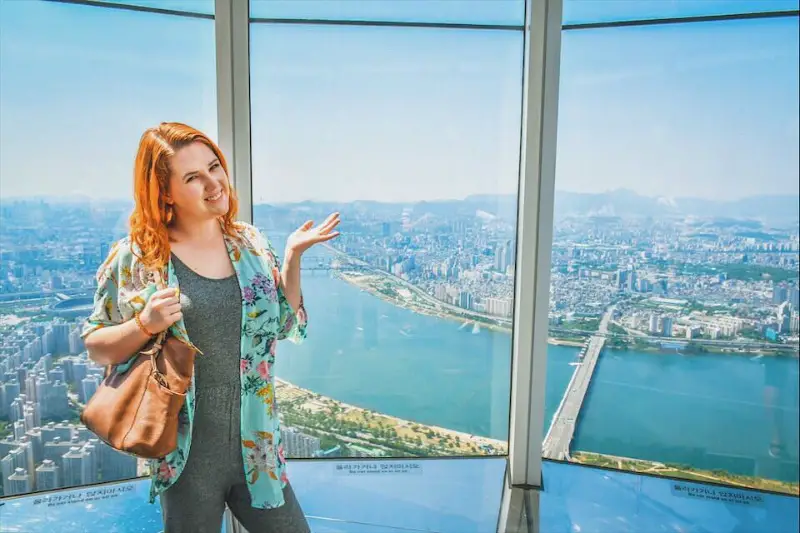
6. Sleep in a Hanok (Traditional Korean House)
Hanok in Korean means traditional house. These majestic places were used as houses hundreds of years ago and offer amazing features like beautifully tiled roofs, intricate wooden details and underfloor heating. The heating works so effectively that most people sleep on the floor in a Hanok.
7. Shop in Myeongdong, The Best Shopping District
Myeongdong is the ultimate shopping destination in Seoul with shops and restaurants galore in a car-free zone. Some of the most famous global and local brands can be found here. Then there’s the amazing street food at night offering everything from Korean Egg Toast to Roasted Lobster.
8. Do a Templestay at a Local Korean Temple
You can’t visit South Korea without experiencing a temple stay program. It’s the best way to immerse yourself in local culture. Various temples offer unique programs for foreigners who want to stay overnight and live like a local. Pray, meditate, eat, work, cook and sleep like a monk.
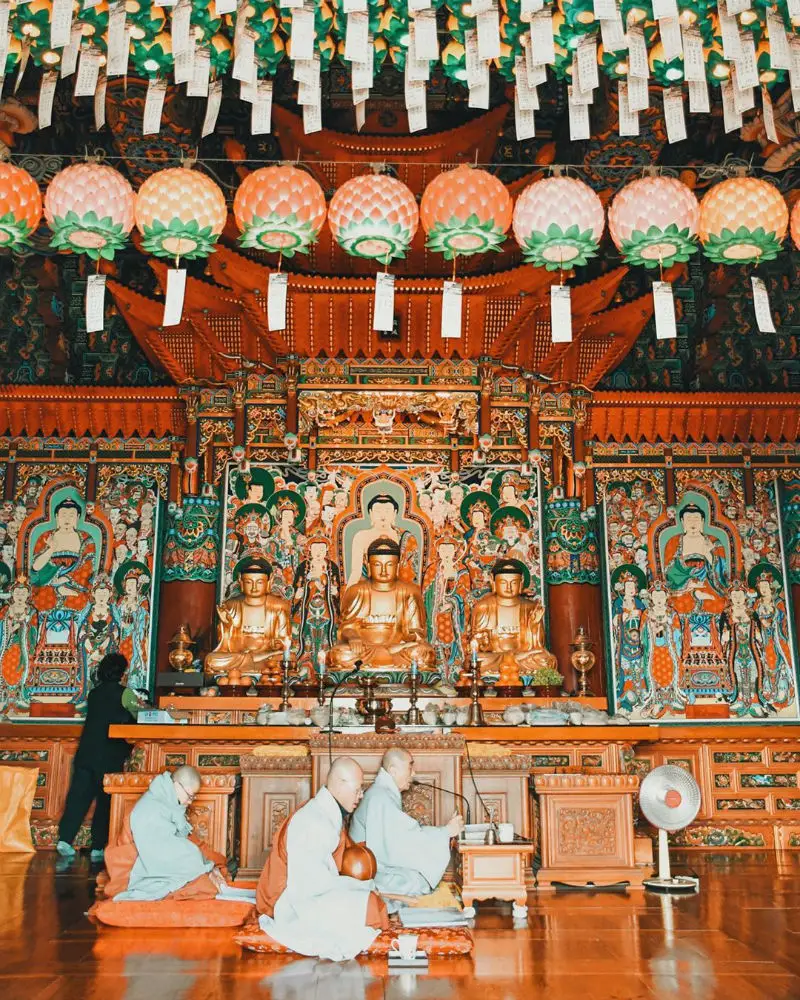
9. Head to the DMZ between North and South Korea
For those brave enough, a tour of the Korean Demilitarized Zone is one of the most fascinating experiences you can have anywhere in the world. There are several quality companies that offer tours of the DMZ and they all have different prices, inclusions and points of interest.
10. Tour Jeju Island – The Largest Island of Korea
Jeju Island is a unique place to experience as it offers volcanic landscapes, a tropical forested national park, a wild coastline with majestic waterfalls and the longest lava tube in the world. If you’re a lover of nature and outdoor adventures then you will most definitely fall in love with Jeju.
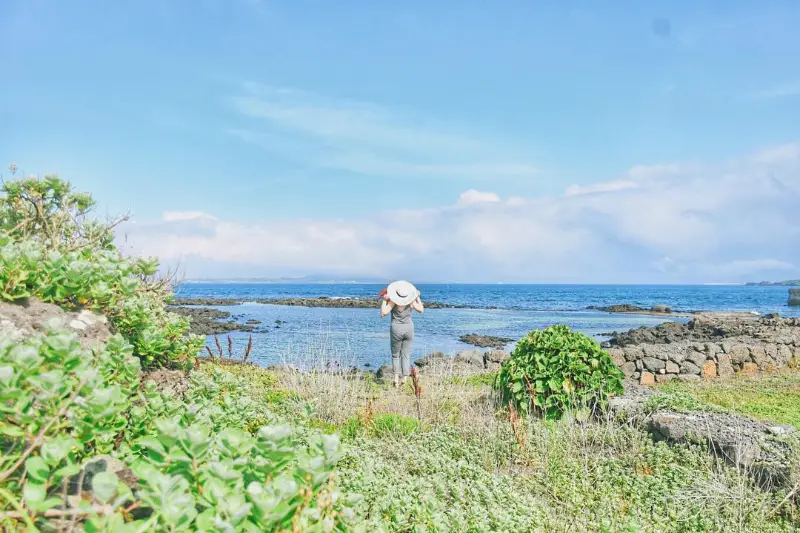
Favourite Memory from my Five Years in South Korea
My husband might get upset if I didn’t mention my Korean wedding here! It was probably my favorite memory from my time in South Korea to date.
We had a traditional Korean wedding held at a Confucius temple from the 13th/14th century. My husband and I both wore traditional Korean clothing and performed various wedding rituals. The best part was that a lot of my family and friends flew over to be there and celebrate with us.
This was followed by a 10-day Korea travel extravaganza with my foreign entourage. We had the best time! We explored Seoul, headed up to the border to see the DMZ, travelled to Jeonju Hanok Village for a few days and also explored “everyday life” in my Korean hometown. It was amazing!
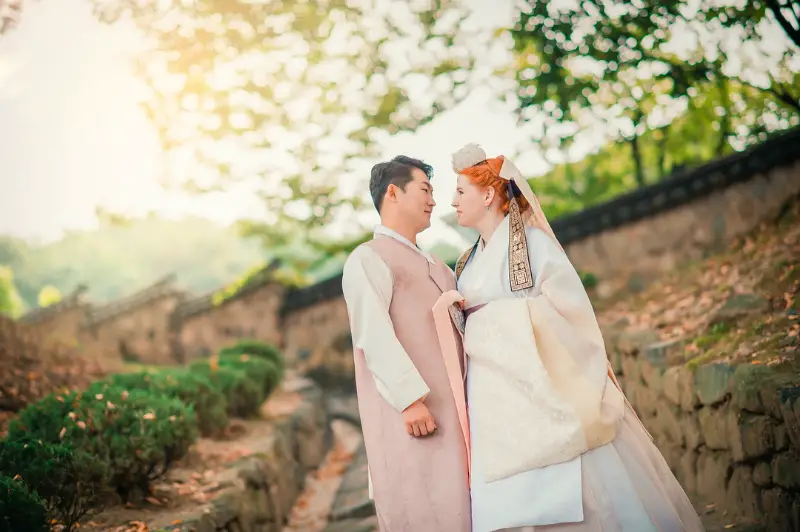
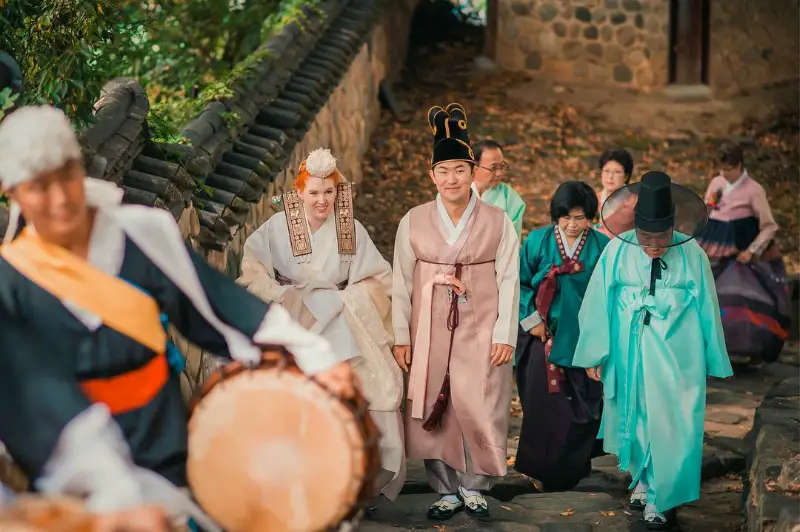
Rich Heritage and History of South Korea
Through visiting various heritage sites and the government-sponsored Korea Immigration & Integration Program (KIIP), which covers a lot of Korean history – I’ve learned quite a lot and am super interested in the history of Korea.
Due to Korea’s quite isolated location being a peninsula, the culture and heritage here is really quite distinct compared to other countries in Asia. However, Korean culture is still very much influenced by common East Asian values that go back to Confucianism and Buddhism.
Korea has seen a lot of prosperous kings and dynasties along the way and countless temples and palaces still bear witness to this heritage. The recent history is also quite interesting, even if it’s on the sadder side.
After Japanese occupation and the division in Korea after World War II, the country was extremely poor. However, the economic boom South Korea was able to achieve to completely turn things around and become one of Asia’s richest and most influential countries was incredible.
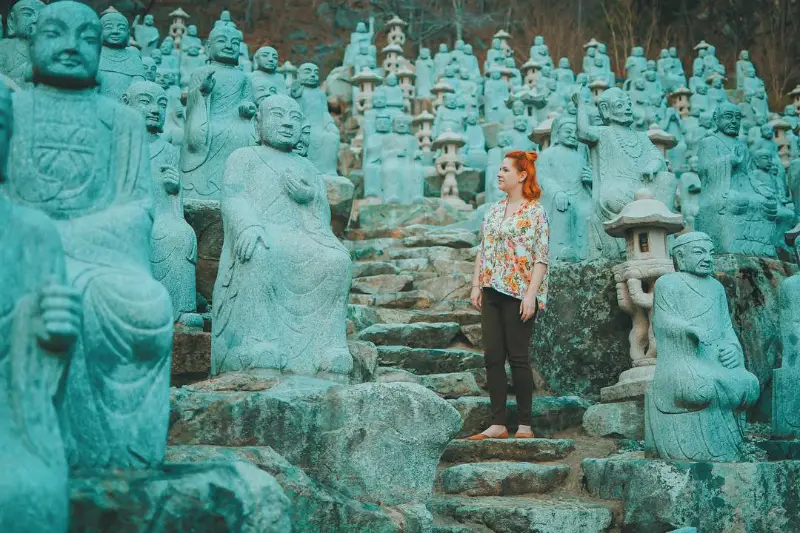
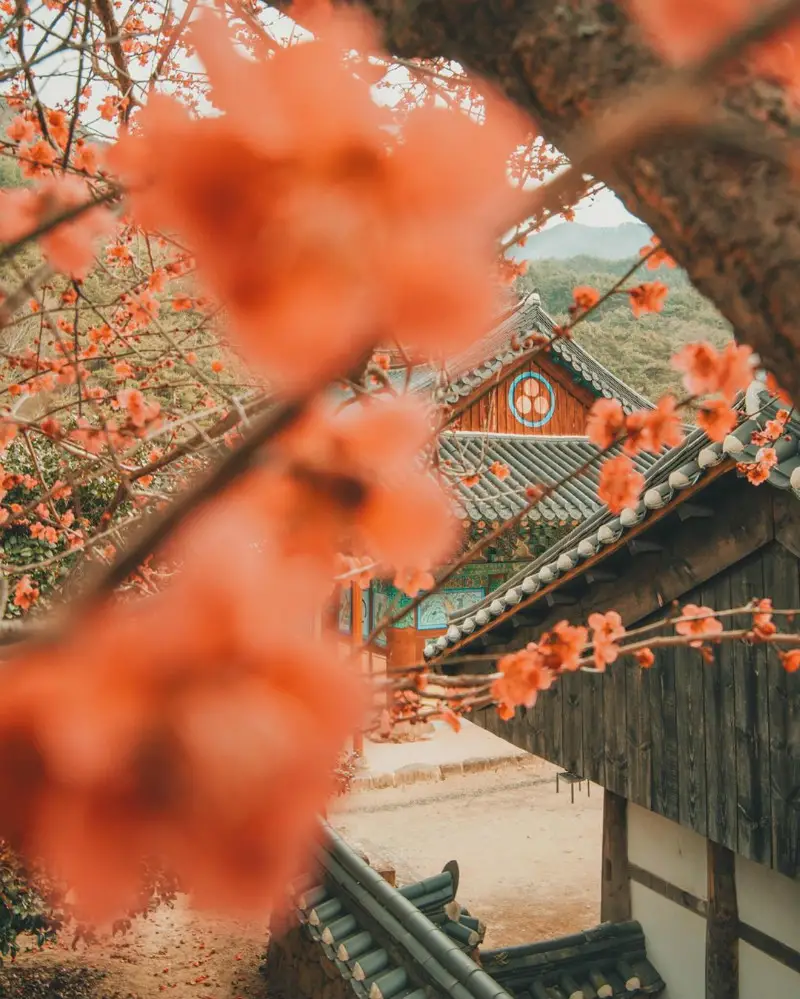
Making New Friends in Korea is a Breeze
South Korea is one of the most homogeneous countries. This means it’s not very ethnically diverse – everybody is Korean! Koreans are proud of their country but at the same time aren’t shy to exchange ideas.
During my time in South Korea, I’ve had the chance to form a lot of friendships with locals and other foreigners living in Korea. The locals here are very social and love to hang out with their friends and engage in leisure activities together. It’s not that difficult to find local friends in Korea at all!
Delicious Food Scene of South Korea
Even though South Korea conveniently sits between China and Japan, the local food is quite distinct from its neighbors. Koreans have a long tradition of fermenting foods to keep them from perishing over long periods of time.
This heavily influences local cuisine in that there are a lot of fermented “banchan” (or side dishes) served with every meal. The most famous banchan being kimchi, of course. Rice is consumed pretty much with every meal and also found in traditional desserts.
Stews and soups are another main player in the Korean food scene. So this is what a traditional Korean set up looks like: a big stew in the middle along with dozens of little side dishes and rice – all family-style. Korean food also has a certain degree of spice to it, which took awhile for me to get used to.
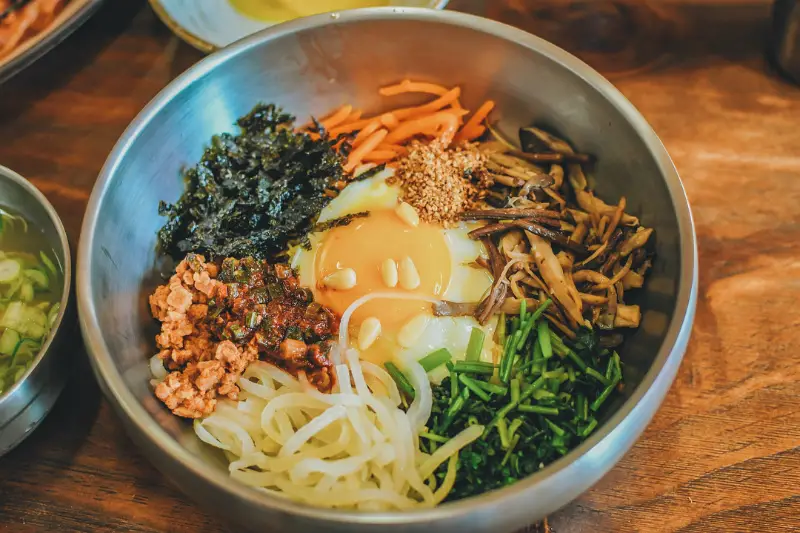
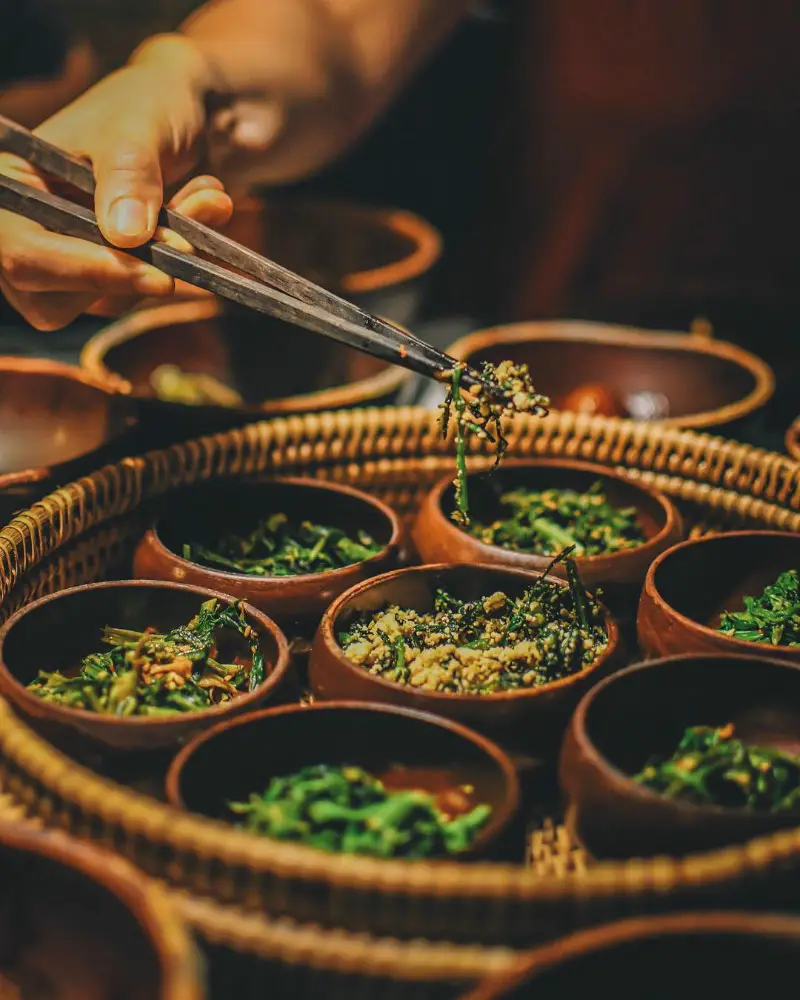
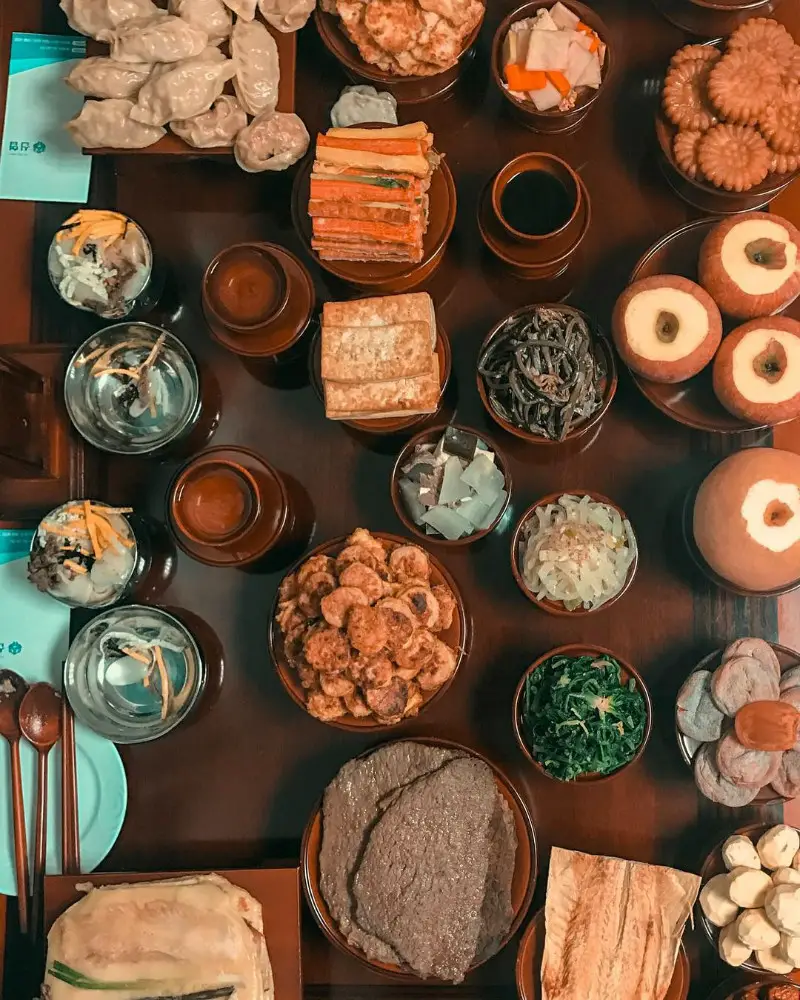
What you Need to Know Before you Go
South Korea is an amazing travel destination and should definitely be on everybody’s bucket list. My advice for anybody visiting Korea is definitely to try as much food as possible. It’s so delicious and some of the flavors are so unique. You won’t find them anywhere else, so make the most of it!
For ease of travel, you should also get a T-Money card. This allows you to use public transport (including taxis) and shop at smaller stores. The popular navigation map “Naver” is also a must as it is much more reliable than Google in South Korea and even shows the tiniest side alleys and walkways.
Even though English is widely spoken in Seoul, this is not the case all over Korea. Words like “kamsahamnida” (thank you) or “juseyo” (please) will go a long way! If you have time, make sure you learn some phrases.
Another tip is if you have the time, be sure to visit other cities than Seoul. Seoul is amazing and has a lot to offer, but South Korea is so much more than Seoul. Venture down south to places like Jeonju or Gyeongju and you will discover the “real” Korea, away from the glitz and glamour of Seoul.
I actually wrote a blog post about exactly this topic, so for more details feel free to refer to: ‘The 10 Things You Want to Know Before Traveling South Korea’. Thanks for reading and I hope to see you in South Korea one day!








